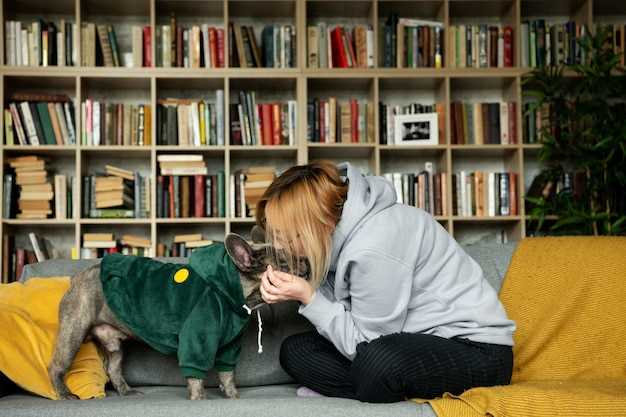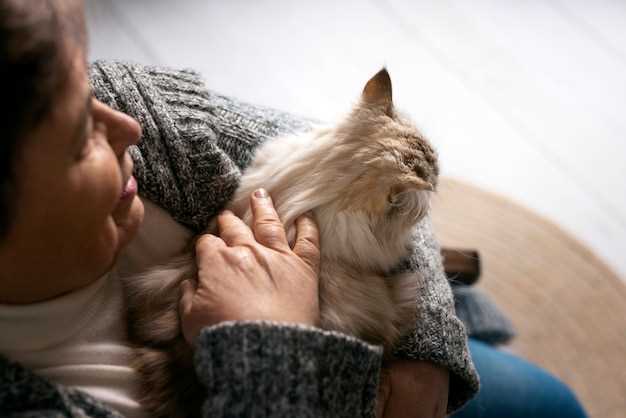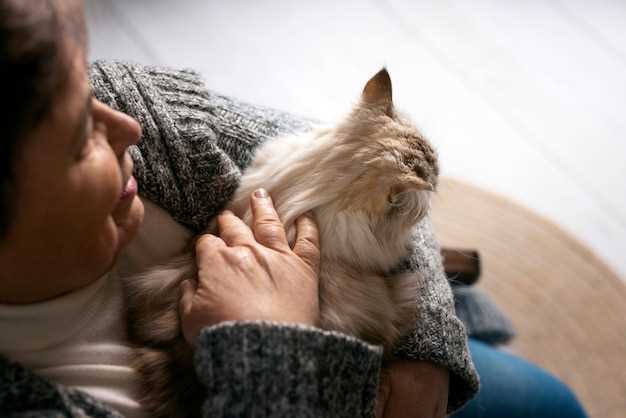Finding Solace in the Heartache of Pet Loss
The bond shared with a furry friend often transcends the ordinary. These animals become integral parts of our lives, filling our days with joy and companionship. When they are no longer with us, the void left behind can feel insurmountable. It can be devastating to face such a profound change. Each memory echoes with love and sorrow, intertwining joy with heartache.
It is important to acknowledge the depth of our feelings. Loss encompasses a myriad of emotions, from sadness to confusion. Such a transition may bring about feelings of isolation. Reaching out for understanding becomes crucial when navigating through this challenging time. Friends, family, or even support groups can offer solace.
Understanding the grieving process can help in accepting this new reality. Each individual experiences this journey differently, resulting in varied emotional responses. Some find comfort in ritual, creating a tribute that honors their companion. Others may seek new ways to express their love, perhaps through sharing memories or engaging in creative outlets. It’s essential to embrace the process.
Every step taken towards healing deserves recognition. While the heartache may remain, it can coexist with cherished memories. Life continues, and a new perspective on companionship may blossom. As time passes, the intensity of the pain may lessen, allowing for a gentle embrace of pleasant reflections. In the end, acknowledging the bond we shared can be a peaceful avenue for healing.
Coping with Pet Loss: Finding Comfort

Experiencing the absence of a beloved companion can be profoundly challenging. Emotions may surge unexpectedly, leading to moments of deep sadness. It’s crucial to acknowledge these feelings as part of a healing process. Each individual’s journey is unique, shaped by memories and shared experiences. You’ll find solace in various ways, often discovering unexpected sources of strength.
Remember the joyful moments. Reflect on the playful days spent together under the sun. Cherish those gentle nuzzles and warm cuddles. Even the smallest memories can evoke a sense of happiness amidst the sorrow. Embracing these recollections allows for a bittersweet blend of grief and gratitude.
Creating a memorial can serve as a meaningful tribute. Consider establishing a special place in your home or garden dedicated to your furry friend. This act can facilitate healing by celebrating their life and the impact they had on you. You might choose to display photographs, write notes, or light candles, allowing the memories to fill the space with love.
Engaging with others can also aid in navigating the complex emotions that arise. Seek out friends or online communities who understand the bond between humans and animals. Sharing stories can foster connection and provide validation. Surrounding yourself with empathetic listeners can lighten the burden of heartache.
Finding ways to honor their legacy could bring a sense of purpose. Volunteer at an animal shelter or donate to a rescue organization in their name. These acts of kindness can create a positive impact, transforming grief into a force for good. Connecting with animals in need may evoke memories and stir emotions yet ultimately lead to healing.
Time becomes an ally in this journey. Allow yourself to feel a range of emotions without judgment. Understand that healing isn’t linear, and periods of sadness can resurface unexpectedly. It’s completely natural. Engage in self-care, whether through exercise, creative outlets, or simply enjoying nature’s beauty. Slowly, you may find peace emerging amid the sorrow.
Understanding the Grieving Process

Experiencing a profound sense of loss can be overwhelming. Emotions surge and recede like ocean waves. It’s a personal journey that each individual navigates in their unique way. Often, moments of sorrow may catch you off guard, bringing tears unexpectedly.
This journey is not a straight line. It ebbs and flows, sometimes feeling chaotic, yet eventually leading to moments of clarity. Acknowledging feelings such as sadness and anger is essential. Many may feel isolated during this time, yet understanding that these feelings are normal provides a sense of relief.
Each phase of this emotional exploration contributes to healing. Individuals may cycle through various stages, including denial, anger, bargaining, depression, and acceptance. This cycle isn’t rigid; it often reflects each person’s experience and can happen multiple times. Recognizing that there’s no right or wrong way to feel is crucial.
| Stage | Description |
|---|---|
| Denial | A feeling of disbelief, resisting the reality of loss. |
| Anger | Frustration and rage directed at circumstances or oneself. |
| Bargaining | A struggle to find meaning, often through “what if” scenarios. |
| Depression | Deep sorrow and withdrawal as the reality sinks in. |
| Acceptance | Finding a way to move forward while honoring the bond. |
Possible feelings may vary from day to day, and that’s entirely acceptable. Avoiding these emotions can lead to greater anguish. Finding safe ways to express oneself is vital. Whether through art, writing, or through conversations with friends, sharing burdens lightens them.
Emotional Stages of Losing a Pet
The journey through the heartache of losing a beloved companion unfolds in various emotional phases. Each stage can evoke a unique spectrum of feelings and reflections. Understanding this progression can help individuals navigate their responses during this challenging time. It’s essential to acknowledge that everyone experiences these emotions differently, with no fixed timeline for healing. Grief can feel overwhelming, and sometimes it seems unbearable.
Initially, many find themselves enveloped in shock and disbelief. This might manifest as numbness or an inability to comprehend the reality of their loss. Questions flood the mind, creating a whirlwind of confusion. It can feel surreal, as if time has momentarily stood still. The heart struggles to accept what has transpired, leading to a disconnect between the mind and emotions.
As time passes, a wave of sorrow frequently sweeps in. The weight of profound sadness becomes palpable, often accompanied by tears and lingering memories. Simple activities may trigger intense feelings of longing. Sometimes, this sorrow might intertwine with guilt, as individuals reflect on their own actions. While painful, it’s crucial to allow oneself to feel these emotions fully.
Another stage often includes anger, which may arise unexpectedly. This anger can be directed at oneself, others, or even the universe for orchestrating such a heartbreaking experience. Individuals may grapple with feelings of injustice and frustration. This emotion can feel isolating, yet it’s an essential aspect of rediscovering a sense of balance in life. Allowing this anger to surface can ultimately lead to a deeper understanding of one’s own emotional landscape.
Eventually, as the journey progresses, some individuals might start to find moments of acceptance. Acceptance doesn’t mean forgetting; rather, it signifies a gradual coming to terms with the absence. It may include cherishing the memories while acknowledging the pain. This phase often brings a bittersweet realization that life moves forward, and it’s okay to embrace joy again. Each person’s steps toward acceptance vary, requiring patience and self-compassion.
Common Reactions to Pet Loss
The emotional journey following the departure of a treasured animal companion can be tumultuous and deeply personal. Each individual experiences this pain in their own way. Reactions can vary widely from profound sadness to unexpected anger. Some find solace in memories, while others may grapple with feelings of guilt or confusion.
People often report a mix of emotions that can oscillate. Denial may surface as one struggles to accept the reality. Physical sensations, like emptiness in the chest, can be intense. It is not unusual to hear the sound of paws or to expect a familiar nuzzle at any moment. The mind wanders through cherished moments, each recall stirring a deeper sense of loss.
- Sadness and many tears.
- Anger directed at circumstances or oneself.
- Feelings of isolation from others who may not understand.
- Guilt over decisions made about the animal’s care.
- Relief, particularly in cases of prolonged illness.
In addition to these immediate reactions, individuals may experience more complex feelings that intertwine as they navigate their grief; it’s common to feel a sudden wave of anger toward the universe one moment, only to be swept away by nostalgia the next, where memories come flooding back, showcasing the happiness shared during those treasured years together.
Additionally, behavior may change. Some people withdraw from social situations. Others may become more expressive, sharing their stories with anyone willing to listen. Many seek out communities, whether online or in real life, to connect with those who share similar experiences. The journey is often a blend of reminiscence and healing as one learns to adjust to life without their faithful friend.
- Reach out for conversation.
- Consider creating a tribute or memorial.
- Reflect on positive memories.
- Allow oneself to feel all the emotions.
- Seek professional guidance if necessary.
How Grief Differs for Pets
Loss can affect animals in profound ways. They experience emotions, albeit differently than humans. Understanding their reactions is crucial. Animals can show signs of distress in various forms. It’s important to recognize these behaviors. Sometimes, what seems like sadness might be confusion.
For instance, a dog may refuse food or avoid playtime. Cats might hide more than usual, seeking solitude. Yet, their responses vary widely across different species. Some pets vocalize their feelings, while others may become more affectionate than ever. In certain cases, an animal’s grief can mimic signs of depression, leaving owners concerned. While they cannot articulate their emotions, their behavioral changes speak volumes.
| Animal | Common Behaviors |
|---|---|
| Dogs | Lethargy, loss of appetite, increased clinginess |
| Cats | Hiding, vocal changes, altered grooming habits |
| Rabbits | Withdrawal, changes in eating habits, decreased activity |
The bond shared between a human and their companion significantly influences how an animal processes their emotions after losing a significant figure. They may search for their departed friend in familiar spots, displaying confusion and longing. All these signs highlight the depth of the connection they hold.
Recognizing Signs of Healthy Grief
Acknowledging the process of mourning is essential. It’s a natural human experience. Each individual navigates this journey in their own way. Understanding what constitutes a healthy response can bring clarity. This segment will explore the manifestations of genuine emotion.
One sign is the ability to reminisce fondly. Smiles may accompany memories instead of tears. It shows emotional resilience and acceptance. Attention to self-care is also important. Engaging in activities that bring joy reflects positive movement.
Additionally, expressing feelings openly signifies progress. Whether through conversations or creative outlets, sharing your thoughts can be liberating. It helps in processing emotions. Seeking and offering comfort to others who understand this journey also fosters healing.
Another indicator might be a return to daily routines. You may notice a gradual shift towards normalcy in life. Although some days are harder than others, re-establishing connections and hobbies can indicate growth.
Moreover, dreams can play a crucial role in helping you reconcile complex feelings. Dreaming about a beloved companion might offer comfort, and these reflections often serve as an avenue for unresolved emotions. Such experiences can reassure you that it’s okay to face and integrate loss; it signifies a journey towards acceptance and peace.
Finding Support During Your Grief

Experiencing the absence of a beloved companion can be overwhelming. It’s a journey filled with unique emotions and challenges. No one should navigate this painful path alone. Seeking understanding and empathy becomes essential as feelings of sorrow surface.
There are many resources available to help. Friends can provide a listening ear. Family may offer comfort through shared memories. Support groups, both online and in-person, create a safe space for expression. Engaging with others who understand fosters a sense of belonging.
Moreover, professional assistance may also prove beneficial. Therapists specializing in loss can guide you through complex emotions. They can provide tools for managing your feelings in a healthy manner. Therapy allows for exploration of emotions that may otherwise be difficult to articulate.
Additionally, engaging in creative outlets such as art or journaling can serve as therapeutic measures. These activities encourage you to express your thoughts free from judgment. They act as a bridge connecting feelings with the external world in a meaningful way. Embracing these forms of expression often leads to unexpected moments of clarity.
Nurturing oneself is equally important. Allow yourself to grieve without pressure to conform to societal expectations. Remember that healing takes time, and it’s okay to seek help whenever you feel overwhelmed.
In moments of darkness, remember that there are individuals and resources willing to share your burden. You don’t have to face this journey alone. Lean into the connections you have, and be open to discovering new sources of support.
Connecting with Pet Loss Support Groups
When facing the heart-wrenching experience of losing a beloved animal, seeking guidance and understanding can be immensely helpful. Many individuals find solace in sharing their feelings with others who are navigating similar emotional journeys. Finding a group that resonates with your situation can create a sense of community and belonging.
Support networks dedicated to the memory of cherished companions often offer various resources. They can provide valuable insights, encouragement, and a platform for open expression.
- Local animal shelters and veterinary clinics often have information about support groups.
- Online forums and social media offer accessible ways to connect.
- Meeting in person can create meaningful bonding experiences.
Being part of a community that understands your pain can make a significant difference. These gatherings can be formal, such as organized meetings with a therapist, or informal, like casual meetups in a park. Alternatively, online platforms provide convenience while still fostering connection. Members typically share stories, recommend coping strategies, and offer solace during difficult times.
Listening to others’ experiences may help you process your own emotions. Sharing your memories about a furry friend can be liberating. Most importantly, knowing that you are not alone can be incredibly comforting. Resources like pamphlets, books, and websites may further guide you on this path.
Consider attending a session to explore how it feels. Some groups are focused on specific types of animals, while others are more inclusive. It’s all about finding what aligns with your needs. Embracing this journey together with others can lead to healing and renewed hope.
Seeking Professional Help: When to Consider Therapy
Experiencing the passing of a beloved companion can bring deep sorrow. Sometimes, the emotional weight feels overwhelming. It can affect daily life in unexpected ways. These feelings might linger, making it hard to move forward.
Recognizing when to reach out for professional guidance is crucial. If you’re finding it difficult to cope, or if everyday activities become burdensome, a counselor could provide a safe space to explore your emotions. When sadness morphs into a persistent or debilitating state, it’s time to consider seeking help.
Therapy offers an opportunity to process your feelings in a supportive environment. Professionals can equip you with tools to handle pain. Conversations can reveal insights you might not have noticed alone. Whether it’s through guided discussions or creative outlets, the path to healing can unfold in various ways.
Trusting a professional can also reduce feelings of isolation. You might be surprised at how common these emotions are. In many cases, engaging in therapy can illuminate pathways to renewal. Remember, it’s perfectly acceptable to ask for assistance when navigating such a profound change in your life.
Creating Memorials to Honor Your Pet
Remembering a beloved companion can be both a beautiful and cathartic process. It allows us to celebrate their life and the joy they brought. Memorials serve as a tangible expression of our love. Each tribute can be uniquely crafted to reflect the special bond shared.
- Plant a tree or flowers in their memory.
- Create a scrapbook filled with photos and memories.
- Commission a piece of art that represents their spirit.
- Make a donation to an animal charity in their name.
- Craft a personalized plaque to commemorate their place in your life.
One particularly meaningful way to honor their memory is through gathering friends and family during a remembrance ceremony, where stories and cherished moments are shared, creating a sense of community while celebrating a life that touched so many.
- Choose a location that holds significance for both of you.
- Include items that symbolize happy times together.
- Invite loved ones to share their own memories.
- Light candles or release balloons to signify hope and love.
Building a memorial offers a chance to reflect on the joy and lessons learned, allowing for a deeper connection to the fond memories that will always remain close to the heart.
Video:
Why Pet Loss is a Heavy Grief
Why Pet Loss is a Heavy Grief by Jo McRogers Grief Support That Works 40,191 views 2 years ago 8 minutes, 3 seconds
Q&A:
What are some common feelings people experience after the loss of a pet?
After losing a pet, individuals often experience a wide range of emotions, including sadness, anger, guilt, and confusion. It’s common to feel an overwhelming sense of grief, similar to what one might feel after losing a human loved one. Many people also report feelings of isolation, as they may believe that others do not understand the depth of their bond with their pet. It’s important to acknowledge these feelings as normal and to allow oneself to grieve in whatever way feels appropriate.
How can I honor my pet’s memory after they are gone?
Honoring your pet’s memory can take many forms, depending on what feels meaningful to you. Some individuals create a scrapbook or an album of photos that celebrate their pet’s life, while others may plant a tree or a flower in their memory. Writing a letter to your pet expressing your love and the impact they had on your life can also provide solace. Additionally, some choose to donate to an animal charity or rescue organization in their pet’s name, thus creating a lasting legacy that helps other animals in need.
What support resources are available for people grieving a pet loss?
There are numerous resources available for those coping with pet loss. Many veterinarians and animal hospitals offer support groups or can refer you to local pet loss hotlines. Online forums and communities dedicated to pet grief can also provide a sense of connection and support, allowing you to share your experiences and feelings with others who understand. Additionally, books and counseling services specializing in pet loss can offer helpful guidance and coping strategies to help you navigate your grief.
How long does the grieving process typically last after losing a pet?
The grieving process after losing a pet varies significantly from person to person and can depend on several factors, including the pet’s role in your life, the circumstances surrounding their loss, and your personal coping mechanisms. While some people may start to feel better within a few weeks, others may take months or even years to fully come to terms with their grief. It’s crucial to allow yourself the time and space to grieve and to seek support when needed. Remember, everyone’s grief journey is unique, and there is no right or wrong way to mourn.
